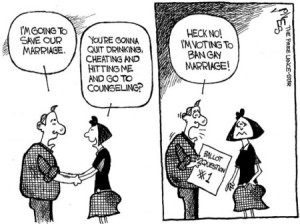Social Science
From a social science perspectives:
The gender employment gap for highly-educated women in Canada was around 10% in 2000, which is one of the lowest rates in the OECD. Labour force participation of women in Canada in 2005 was around 72%, Women accounted for two-thirds of the 1.3 million increase in the Canadian labour force during the 1990s. There is no major variation in the
labour force participation rates for women at different stages of family building because employment is often combined with rearing children. Canada has one of the largest wage gaps in the OECD between men and women working full-
time. Earning differentials between males and females are slowly narrowing in Canada, although the gap remains at 30%. The differences in occupational choices and the relatively high incidence of part-time work among women relative to men negatively affect their wages.


Add a comment June 6, 2011

Michelle Bachelet
Michelle Bachelet is a socialist pediatrician and epidemiologist who is also the president of Chile. Michelle Bachelet is also the Under-Secretary-General for Gender Equality and the Empowerment of Women.She is long-time champion of women’s rights, she has advocated for gender equality and women’s empowerment throughout her career. One of her major successes was her decision to save billions of dollars in revenues to spend on pension reform, which guaranteed a programme of social protections for women and children, despite the financial crisis. This included tripling the number of free early child-care centres for low-income families and the completion of some 3,500 child-care centres around the country.
http://www.un.org/News/Press/docs/2010/sga1262.doc.htm
Add a comment June 6, 2011

Women

This picture is signifying the strength and empowerment should have and will work hard to get. They will achieve being strong through politics, standing up for their human rights and fighting for what they believe.
Add a comment June 5, 2011

UNICEF Gender Equality Facts
Gender and girls’ education
- Over 110 million of the world’s children, two thirds of them girls, are not in school.
- Of the world’s 875 million illiterate adults, two thirds are women.
- During the 1990s, gender parity in primary school enrolment improved in all regions world-wide and in nearly two thirds of the countries with available data. UNICEF is supporting 25 countries to accelerate progress towards achieving gender parity in primary school enrolment by 2005.
- Half of the girls who live in developing countries (excluding China) will be married by their 20th birthday. Increasing girls’ time in school is one of the best ways to foster later, chosen marriage.
See the Girl’s education module for more information
Gender and violence against women and girls and child protection issues
- Data shows that at least one in every three woman is a survivor of some form of gender-based violence, most often by some one in her own family. [1999 Johns Hopkins global report]
- Girls between 13 and 18 years of age constitute the largest group in the sex industry. It is estimated that around 500,000 girls below 18 are victims of trafficking each year.
- Female Genital Mutilation (FGM) affects l30 million girls and women globally and places 2 million at risk annually. The prevalence of FGM remained stable at levels above 90 per cent in many countries during the last decade, with little improvement over the years.
- UNICEF supports strengthening knowledge and understanding of gender violence and abuse in many countries and addresses the need for reform of legal systems and policies.
- In some cultures the preference for boy children results in pre-natal sex selection and infanticide of girls. In India, for example, there are 933 Indian women for every l,000 men, resulting in 40 million ‘missing’ women.
See the Child protection module for more information
Gender and the Maternal Mortality Rate (MMR) and other health issues
1,400 women die every day from pregnancy-related causes, 99 per cent of them in developing countries.
- In Sub-Saharan Africa, a woman has a one in three chance of dying in child birth. In industrialized countries, the risk is 1 in 4,085.
- Direct obstetric deaths account for about 75 per cent of all maternal deaths in developing countries.
- UNICEF currently supports emergency obstetric care in the 12 countries with the highest MMR.
See the Early childhood module for more information
Emergencies
- More than 80 per cent of the world’s 35 million refugees and displaced people are women and children.
- Emergencies puts women at risk of extreme sexual violence and abuse. In Rwanda, for example, 2,000 women, many of whom were survivors of rape, tested positive for HIV during the five years following the 1994 genocide.
See the Emergencies module for more information
http://www.unicef.org/gender/index_factsandfigures.html
Add a comment June 5, 2011

Gender Equality
It is very important to improve equality between men and women with regard to benefiting from the social and economic infrastructures, services and general welfare. The basic objective here is to reduce the differences of opportunity between men and women in receiving health, education and employment services, and in involvement in economic activities and decision-making mechanisms.
Add a comment June 5, 2011





